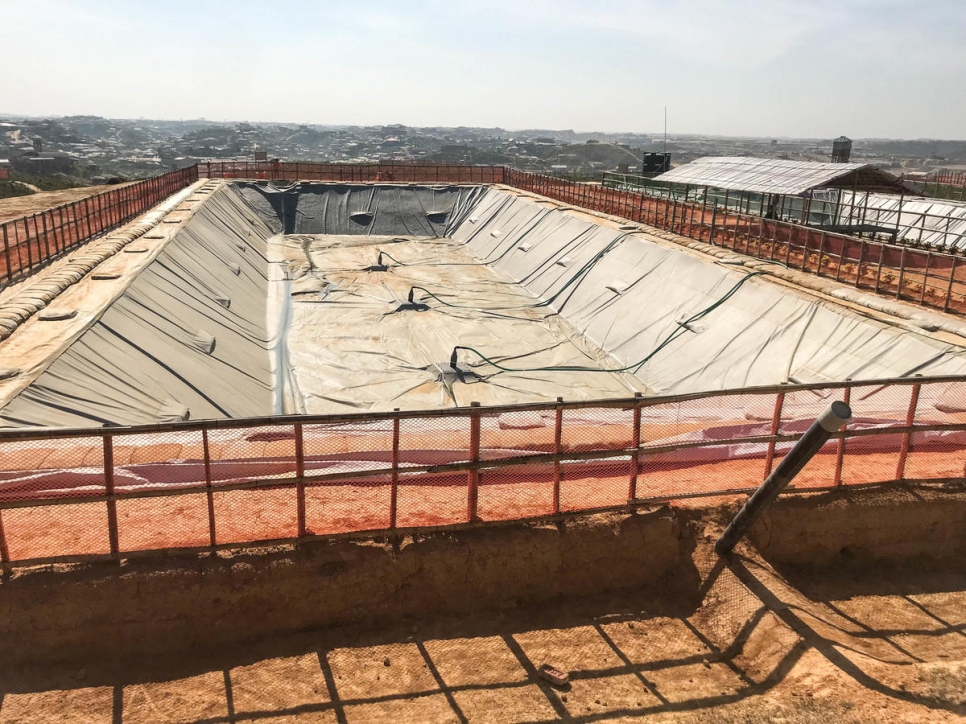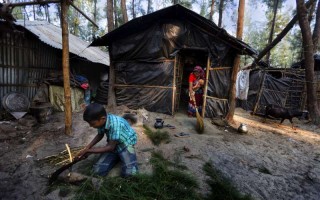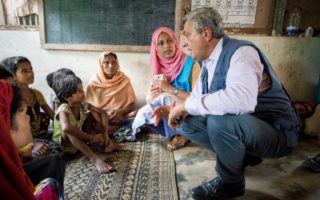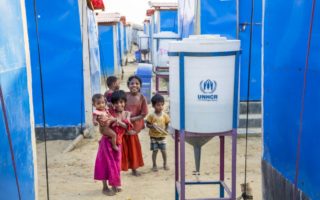
The human waste treatment facility under construction at the refugee settlement near Kutupalong, Bangladesh. © UNHCR/Firas Al-Khateeb
This is a summary of what was said by UNHCR spokesperson Andrej Mahecic – to whom quoted text may be attributed – at today’s press briefing at the Palais des Nations in Geneva.
UNHCR, the UN Refugee Agency, and Oxfam have together put into service this week in Cox’s Bazar the biggest human waste treatment facility ever built in a refugee settlement. The facility, funded by UNHCR, can process the waste of 150,000 people – 40 cubic meters a day. To put this in context, it’s roughly the equivalent of that needed for a population the size of Dijon in France, Savannah in the USA or, in Switzerland the City of Bern.
Close to a million Rohingya refugees live in a complex of settlements in the Cox’s Bazar area. Kutupalong, the largest refugee settlement in the world, is home to more than 630,000 refugees and managing the waste in this terrain requires innovative approaches. The speed and scope of the refugee crisis which began in August 2017 meant that most of refugee sites grew spontaneously, resulting in limited available land suitable for latrine pits and waste water treatment.
The ability to treat large volumes of waste on site, rather than having to transport it elsewhere, is a critical step to safe and sustainable disposal of such waste in emergency situations. This will significantly reduce health risks for refugees and host communities and the likelihood of the outbreak of disease. For example, more than 200,000 cases of acute diarrhoea were reported in the Rohingya camps in 2018, as well as respiratory infections and skin diseases like scabies – all common in settings where sanitation and hygiene are challenges.
Bangladeshi authorities provided the site for the facility and the project was delivered in collaboration with the government’s Refugee Relief and Repatriation Commissioner’s Office in Cox’s Bazar. UNHCR and Oxfam engineers, with support from Rohingya refugees, built the new site in just over seven months.
The sludge is transported by waste vehicles that empty out waste from multiple locations in the refugee sites into two massive, tightly covered lagoons where the processing begins. The facility maintains minimal operational and maintenance costs, with the initial investment of developing the site and installing the equipment falling just under $400,000. The system also benefits local Bangladeshi communities, who have been generously hosting and supporting refugees. This model will be rolled out across other sites in Cox’s Bazar area in 2019 and UNHCR is considering replicating it in future refugee crises.
UNHCR has also been working with partners on waste management in Rohingya refugee sites in over 275 small scale sludge treatment sites. More than a dozen different treatment technologies have been implemented, in different scales, combinations and configurations – including lime treatment, biological treatment processes and biogas production which also supplies some refugees with gas for cooking.
For more information on this topic, please contact:
- In Dhaka, Joseph Tripura, tripura@unhcr.org, +88 17 1309 0375
- In Cox’s Bazaar, Firas Al-Khateeb, khateeb@unhcr.org, +880 18 8593 4309
- In Bangkok, Caroline Gluck, gluck@unhcr.org, +66 81 827 0280
Originally published by UNHCR on 01, February 2019





